Geoscience Reference
In-Depth Information
138.4˚
138.6˚
138.8˚
139˚
b
k
m
2007
Depth =15 km
0
5 0
37.4˚
2004
37.2˚
6.0
6.5
7.0
Vp (km/s)
Figure 9.4 (b) 15 km. The center of the gray scale corresponds to an average velocity calculated at
this depth (6.5 km/s). All of the relocated aftershocks (white circles) are superimposed.
that the eastward- or westward-dipping faults on the flanks of the DCT are situated along
mechanically weak structural boundaries between the thick sediment and the basement
(
Figure 9.5
)
.
The geometries of the block structures associated with the ancient rift system change
along the fault strike in the vicinity of the cross-section at around Y
0kmin
Figure 9.2b
.
In the source region of the 2004 Chuetsu earthquake, the thickness of sedimentary layers
in the hanging wall increases markedly on the southwest side of the mainshock hypocenter
basement structure dominates in the south, whereas a northwest-tilted basement structure
gradually develops towards the north (e.g., Kato
et al
., 2008a). These spatial variations
indicate the presence of a segment boundary of the block structure near the cross-section
of Y
=
=
0kmin
Figure 9.2b
.
9.3.3 Stress loading processes to the reactivation of the ancient rift system
Even if several ancient weak fault zones in the upper crust exist within the rift system,
a driving force to reactivate them is needed. We here discuss the mechanisms of stress
loading into source faults of intraplate earthquakes in the Niigata region.




































































































































































































































































































































































































































































































































































































































































































































































































































































































































































































































































































































































































































































































































































































